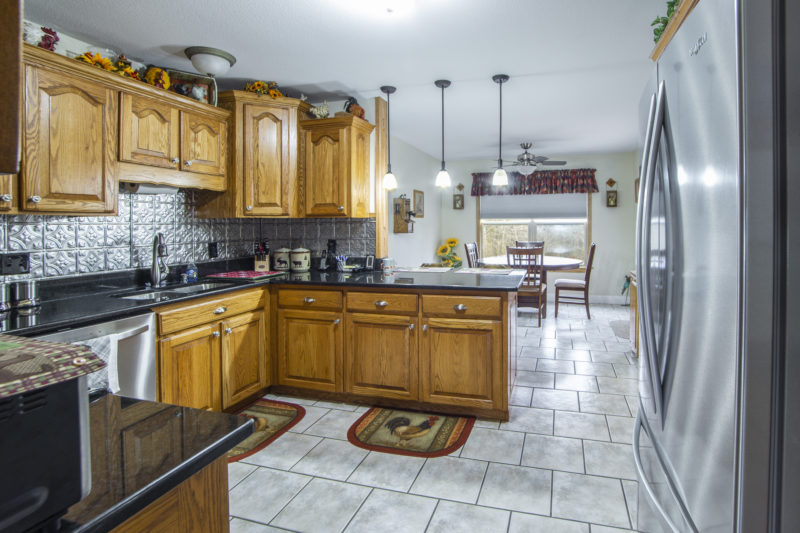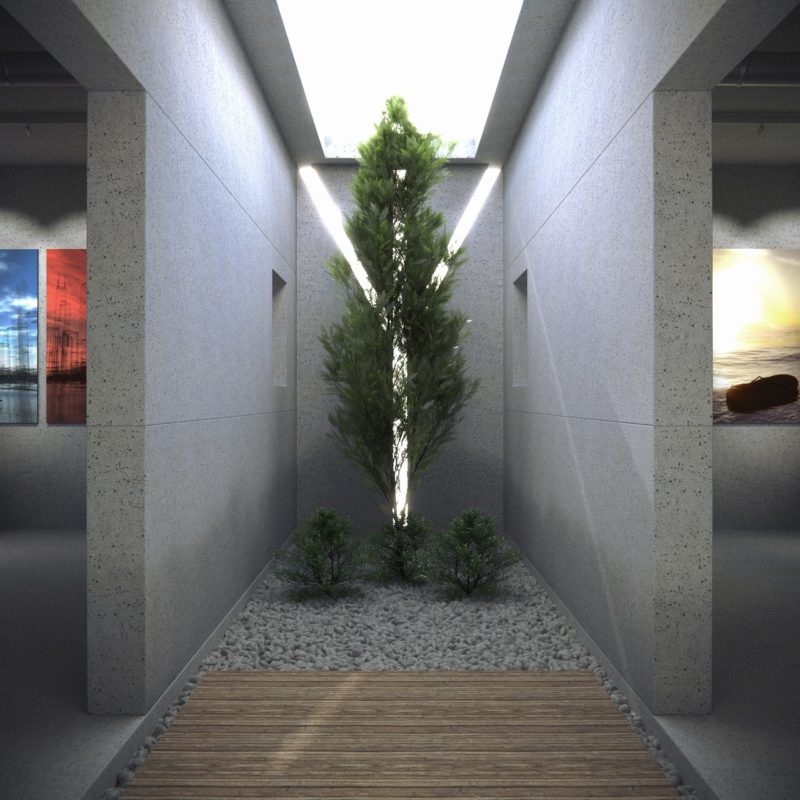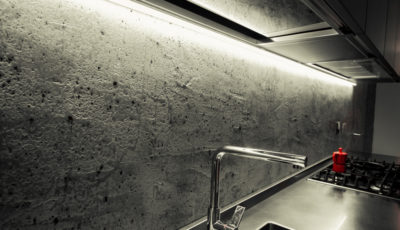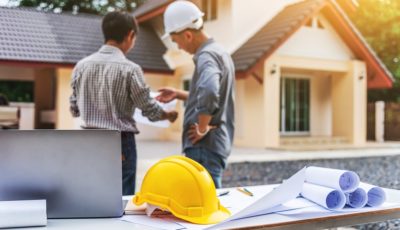10 Things You Should Know About Concrete Overlays
When you have a concrete floor that needs repair or just needs a little makeover, it can be done in an interesting way and could actually make it a lot better than it was before. Concrete overlays is one method that will give your floors a different look. There are a few things that you need to know before applying any overlaying products. Below you will see 10 of the most important things to know about concrete overlays so you’re all ready to redecorate or fix that concrete.
1 – What are Concrete Overlays?
What you’re applying over your existing concrete is basically a thin color concrete cement-based products. They are used mainly for decorative purposes and repairing damages. The overlay that you apply can be as thin as you want as it all depends on your personal preference. Many years ago, there weren’t a lot of user friendly products that would allow you to easily resurface a worn out and ugly looking concrete. But all that has changed with today’s different products. They have different bag mixes that only need water for it to work. Depending on the manufacturer, most of the overlay products have their own mixture and proprietary blends. There are different blends of portland cements, different aggregates and polymer resins with polymer modified additives in every blend. The polymer is a key part of the overlay; it’s what makes all the blends and products stick together, making them strong to provide the powerful bond to the existing concrete.
2 – Can It Be Used on Walls?
Yes, it can be. These overlays help protect the wall surface without compromising its look. Vertical overlays differ from horizontal overlays due to reducing the weight of the material so that it can hang on the wall without sagging. Depending on the surface, additional products may be needed for adhesion, moisture intrusion and strength.
3 – Important Facts to Consider
Concrete overlays are only as good as the surface, it is being applied to. You need to keep in mind that if the concrete is cracked or surfacing up, then the overlay will also break and come up. You need to be sure that if the concrete is heavily damaged, your overlay won’t last long. There are different ways to strengthen and treat existing concrete. But because the ground moves depending on the weather conditions and moisture, you should be aware that there are never any solid guarantees the overlay will not delaminate or crack. It all depends on the product contents too at the end of the day; you need to get your money’s worth. Look for outlets that provide strong blends. The people at https://craftsmanconcretefloors.com/ pride themselves in utilizing the highest quality, the most advanced and environmentally responsible products. So, if the blends are strong and made out of high quality ingredients, then the overlay would look much better and last longer. Before you decide to replace the floor entirely, consider that resurfacing it instead gives new life into a surface and costs less than removing and replacing it with a new floor or wall.
4 – Hiring Professionals
It’s really important to hire a concrete professional who knows how to properly prepare the mixture for you, and if they have decorative finish experience then it would make it a lot easier and better. Also, you need to talk with the professionals about all the equipment and materials needed for the job. Getting a structural engineer to assess the foundation so he could determine its soundness and stability is important. They will explain which cracks are ignorable, which are easy to fix, and which will require hiring a contractor to make the repairs. Professionals can also point out that cracks wider than one eighth of an inch could mean there are problems with the foundation’s integrity, so there would be other things they would need to do before applying anything. You could do it all yourself of course, but having professionals who know what they’re doing could be worth the extra money. You never know what could happen, especially when dealing with materials such as these.
5 – Types of Overlays and Resurfacing
Here are some of the most commonly used types of concrete overlays:
- Microtopping: This type helps to fill in small damaged spots on the floor to give a blank canvas look. It’s got a feather edged or a one eighth inch depth of spread. The color option this type has been broadcast dry pigment-accent with stains-dyes. Can give out two finishing options, either smooth or textured.
- Stamped: It’s used both indoors and out to give a concrete slab a stamped texture with the finishing appearance of wood, tile, brick, slate or stone. It has a quarter or three quarter inch depth of spread. Its color options are broadcast pigments, colored liquid, powdered releases, stains, dyes, and tinted sealers.
- Spray-Down: This type allows you to push your creativity to the limit, offering different options for finishing like splatter coat or a knock-down look. It has a one eighth inch depth of spread with different color options like stains, dyes, and tints. You can also have pre-colored blends or add the colors during the mixing process.
- Self-Leveling: With a depth of spread of one or one fifth of an inch. This type is considered to be the most unpredictable of all overlays. They have a short working window so you got to be careful and fast to avoid any mistakes. Its color options are integral pigments mixing, stains, dyes, or tints. It gives out a saw cut finishing or you could have engraved designs made on it.
6 – Prep before applying
Concrete resurfacing and overlaying takes multiple steps, and there’s some prep work that’s needed before starting on any surface makeover or repair. You should first determine if the concrete is suitable for resurfacing and overlaying. If the surface isn’t heavily damaged, clean it, then repair and prime it. There’s pressure washing that uses high velocity to get dirt, dust and grime off. There’s also power washing which uses hot water to get rid of stains and other tough elements. You need to repair the concrete and remove all the unnecessary surfaced up bits before you apply anything, also doing certain steps to check for its stability and soundness then you use all the synthetic or rubberized fillers needed to repair it. There’s mud jacking that you should do. It’s basically pumping or pouring concrete under an existing slab that is cracked or sagging, this flattens and levels the slab. You should perform mud jacking after you finish power and pressure washing. This step can be skipped if the concrete is in good condition. After the surface is cleaned and repaired, the mixing truck must deliver and pour the additional concrete needed within 90 minutes or 300 rotations. After all these steps are done and the overlay blend is ready, then you can apply it to the surface.
7 – Tools Needed
You cannot do anything without the proper tools. Proper tools and equipment is crucial and can make the difference between struggling through the process or a seamless installation. There are some of the important tools that you would need before starting:
- Squeegee: Squeegees are considered the fastest way to apply micro-toppings and bond coats. Although some applicators use small handheld squeegees while working on their knees, but they are mostly used while standing upright. Like hand trowels, they come in a wide variety of shapes and sizes. Plus, there’s metal and rubber kinds for squeegees so it depends on your preference.
- Magic Trowel: The magic trowel can technically be considered a squeegee, but it’s more of a “finesse” tool. While the squeegee is used for larger and faster applications like driveways, the magic trowel is used for producing a more refined floor. The rubber blade is much thinner and somewhat flexible when compared to a normal squeegee.
- Hand Trowels: Hand trowels come in many shapes and sizes. For example, some technicians prefer using a square-edged trowel while others choose to use a pool trowel, which has rounded edges. Typically, hand trowels range from 4 to 24 inches in length.
- Funny Trowels and Fresnos: These types of tools are attached to the end of a pole and are most commonly used for stamped overlays. Having the funny trowel or fresno on a handle allows you to stand upright while finishing the topping, unlike hand trowels that need you to work on your knees.
- Smoothing Paddles: Smoothing paddles are commonly used for applying self-leveling overlays. Most smoothing paddles come with either a 45-degree-angle edge or a rounded blade, choosing one depends on your personal preference. They serve dual purposes. Not only do they smooth and level the surface, they also greatly reduce the occurrence of air bubbles inside the mixture itself after it’s been applied.
- Mixing Paddles: This is a very important tool that’s used for mixing the blends and the type you choose is equally important also. Choosing the wrong one may cause the overlay material to be clumpy or make the colors not mix together properly. Some mixing buckets for self-leveling cements have an oval shape and it is important to use a mixing paddle that can follow the form and the shape of the bucket.
- Gauge Rakes and Spreaders: These tools are commonly used with materials that are a quarter of an inch thick or thicker, such as self-leveling cements, stamped overlays and repair mortars. Usually, they are fitted with adjustable ears or cam locks that you set to the certain topping thickness you desire.
8 – The Prices of the Overlays and Resurfacing
You should know that prices might vary depending on where you’re from. The per-square-foot cost is different and depends on the type of resurfacing you want, the condition of the existing surface, and the size of the project. It’s recommended that you plan your budget and see if you got more areas that needs work and several cracks to fill or need mud jacking to make the slab level. You also need to be aware that smaller projects may be a bit more expensive if you’re hiring a professional because some companies have a flat fee or minimum charge. The average cost to resurface in 2019 to 100 square feet of concrete is $400. Less expensive projects can run as little as $300 while more expensive ones are about $500. The price per square foot can range between $3 and $5. The resurfaced area could be a driveway, patio, pool deck, floor or slab foundation in the basement. Concrete with a decorative overlay typically ranges in price from $7 to $12 per square foot while stamped concrete costs $8 to $20. The per 100 square-foot cost of installing stamped concrete ranges from $800 to $2000. The price of a standard 38×16-foot driveway ranges from about $4,900 to $12,200. The total depends on the stamped design’s complexity as well as the square footage. The per 100 square-foot price of decorative overlays ranges from $700 to $1200. The cost to resurface a standard 38×16-foot driveway with a decorative overlay ranges from $4,300 to $7,300.
9 – The Cost of the Additional Steps Needed
The average price for pressure or power washing an exterior surface, which is the first step in the resurfacing process is $300. Pressure washing a driveway price could be between $80 and $200 while power washing is about $130 to $220. Repairing concrete usually costs from $300 to $3,500. Fixing cracks ranges from $250 to $800. If the cracks are wider than one eighth of an inch, hiring a structural engineer to help you in this situation would cost you about $500. To cover the cost of leveling or mud jacking concrete slabs, most people can up an average price of $900. The cost of concrete delivery is different, but ranges from $1,500 to $5,700, the price per-square foot of pouring new concrete is $13. The coloring, ornamenting and sealing of the concrete is different also depending on the type. The Clear type which has a water base cost about 0.15$ per-square foot, the Acrylic type which has a solvent base cost about 0.20$ per-square foot and the Elastomeric type which also has a water base cost 0.13$ per-square foot.
10 – The Pros and Cons of Concrete Overlays
If you want to check if all of this is worth your time and money, outweigh the pros and cons first:
Pros:
- Easy maintenance
- Long-lasting
- Not susceptible to moisture damage
- Eco-friendly
- Economical
- Many styles
Cons:
- Difficult to correct mistakes
- Amplifies sound
- Cold to the touch due to heat conductivity
- Environmentally unfriendly if not using existing slab
Spruce up your floors and walls
In conclusion, even if it has some cons, concrete overlays are really worth it because it will liven up your floors and walls. Making them even better than they ever were. Do your research, hire a professional to help, decide on materials and colors to use, as well as prepare your tools. Once you’re educated enough on the process of applying concrete overlays, you’ll be able to give your floors the makeover it needs.














